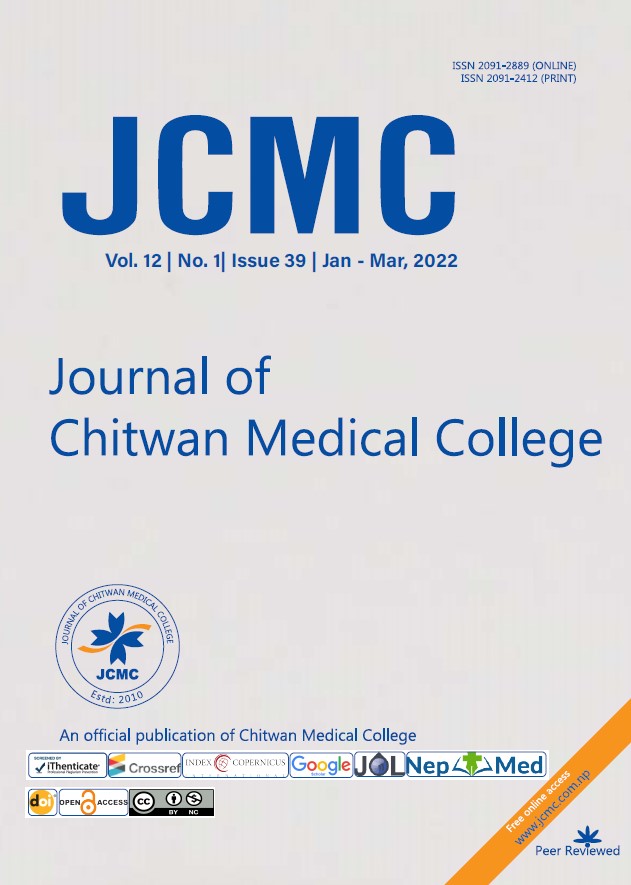Morphology of condyle- a radiographic study
Keywords:
Mandibular condyle; Morphology; Orthopantomograms.Abstract
Background: Mandibular condyle has a variety of morphology. The changes in their shape and size has been attributed to ageing process, developmental abnormalities, distinct diseases, trauma, endocrine shock, radio therapy etc. Panoramic radiographs remain the easiest, safest and most cost-effective screening modality for temporomandibular joint abnormalities. The study aimed to assess the different shapes of condyles using orthopantomograms from the archives of the hospital data. The variations among the sexes and between the right and left sides of an individual were also determined.
Methods: This retrospective study was conducted at People’s Dental College and Hospital within the time period of 1 year (November 2019- November 2020). Orthopantomogram of patients falling within the inclusion criteria were studied. The different shapes of condylar process were traced using marker pencil for both right and left sides. Data collected was entered in Microsoft Office Excel sheet 2013-- and calculated in SPSS version 24 and analyzed using descriptive statistics.
Results: Out of the 874 mandibular condyles of 437 patients, the most common was the oval shaped in both the right (275) and the left sides (277), followed by bird beak, diamond, flat and crooked finger respectively. The oval shaped condyle appeared to be predominant in both sexes. The flat shaped and diamond shaped condyle appeared to be a rarity.
Conclusions: The most common shape of condyle was found to be oval shape bilaterally and in both genders. Least observed shapes of condyle were flat shape in female patients and diamond shape in male patients.
Downloads
Downloads
Published
How to Cite
Issue
Section
License
Copyright (c) 2022 Pranay Ratna Shakya, Rinky Nyachhyon, Amita Pradhan, Ratina Tamrakar, Sudeep Acharya

This work is licensed under a Creative Commons Attribution 4.0 International License.




